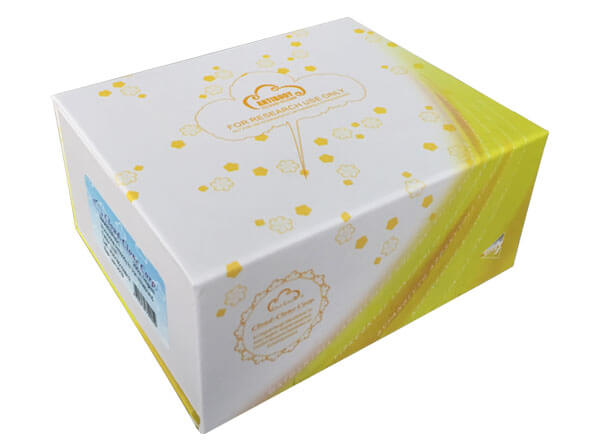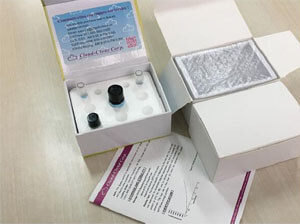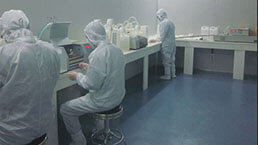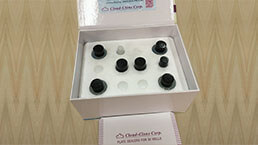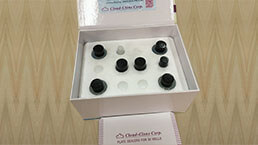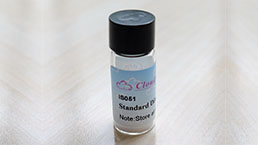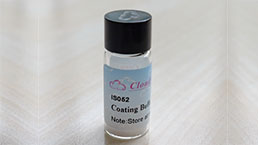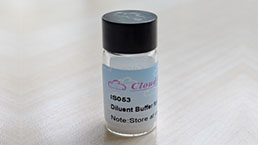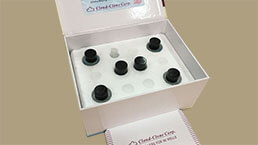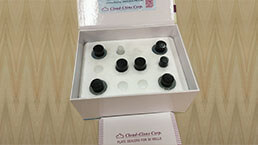ELISA Kit DIY Materials for Fatty Acid Binding Protein 4 (FABP4) 

A-FABP; AFABP; AP2; Fatty Acid Binding Protein 4, Adipocyte; Adipocyte Protein 2; Adipocyte-type fatty acid-binding protein
- UOM
- FOB US$ 1,231.00 US$ 2,052.00 US$ 3,694.00 US$ 7,182.00 US$ 12,312.00
- Quantity
Overview
Properties
- Product No.KSB693Mu01
- Organism SpeciesMus musculus (Mouse) Same name, Different species.
- ApplicationsMain materials for "Do It(ELISA Kit) Yourself"
Research use only - Downloadn/a
- CategoryMetabolic pathwayEndocrinologyCardiovascular biologyHepatology
- Reagent Contents Capture Antibody, Detection Antibody, Standard, Streptavidin-HRP, TMB Substrate, 96-well Plate
- Detectable SampleSerum, plasma, tissue homogenates and other biological fluids.
- Applicable PrincipleDouble-antibody Sandwich ELISA for Antigen Detection
- Detectable Range31.2-2000pg/mL
- Applicable Sensitivity13.8pg/mL
Sign into your account
Share a new citation as an author
Upload your experimental result
Review

Contact us
Please fill in the blank.
Specifity
The Abs in the kit have high sensitivity and excellent specificity for detection of Fatty Acid Binding Protein 4, Adipocyte (FABP4). No significant cross-reactivity or interference between Fatty Acid Binding Protein 4, Adipocyte (FABP4) and analogues was observed.
Usage
1. Coat the plates with 100μL per well of working solution of Capture Antibody.incubate overnight at 4°C or incubate at 37°C for 2 hours.
2. Aspirate and wash 1 time.
3. Block the plates with 200 μL per well of working solution of Blocking Buffer. Incubate at 37°C for 1.5 hours.
4. Aspirate and wash 1 time. The plates are now ready for sample detection, the protocol is the same as regular ELISA.
Storage
Antibodies, Standard and Streptavidin-HRP should be stored at -20°C. TMB should be stored at 4°C. 96-well Plate could be stored at room temperature. The contents are valid for twelve months. They are stable for one month after opening when stored at 4°C.
Support pack
Giveaways
Increment services
Citations
- Enhanced A-FABP expression in visceral fat: potential contributor to the progression of NASHPubMed: 23091808
- Siesta is associated with reduced systolic blood pressure level and decreased prevalence of hypertension in older adultsPubMed: 26134622
- Overexpression of the A-FABP gene facilitates intermuscular fat deposition in transgenic micePubMed: 25867423
- Cranberries (Oxycoccus quadripetalus) inhibit lipid metabolism and modulate leptin and adiponectin secretion in 3T3-L1 adipocytesPubMed: 25952883
- Increased expression of fatty acid binding protein 4 in preeclamptic Placenta and its relevance to preeclampsiaPubmed:26992681
- Valproate acid (VPA)-induced dysmetabolic function in clinical and animal studies.pubmed:28161274
- Changes of Plasma FABP4, CRP, Leptin, and Chemerin Levels in relation to Different Dietary Patterns and Duodenal-Jejunal Omega Switch Surgery in Sprague …Pubmed:29849871
- Lack of pronounced changes in the expression of fatty acid handling proteins in adipose tissue and plasma of morbidly obese humansPubmed:29335416
- 25-HC promotes hepatocellular carcinoma metastasis through up-regulation of TLR4 dependent FABP4Pubmed: 31720079
- Water Specific MRI T1 Mapping for Evaluating Liver Inflammation Activity Grades in Rats With Methionine‐Choline‐Deficient Diet‐Induced Nonalcoholic Fatty Liver …Pubmed:35212074
- The Effect of Mineralocorticoid Receptor 3 Antagonists on Anti-Inflammatory and Anti-Fatty Acid Transport Profile in Patients with Heart FailurePubmed:35455943
- FABP4 secreted by M1-polarized macrophages promotes synovitis and angiogenesis to exacerbate rheumatoid arthritisPubmed:35729106



